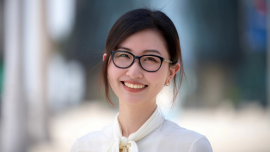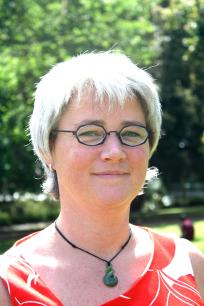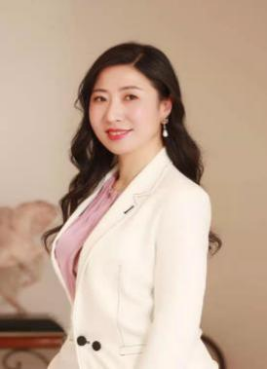
The Rose in Science Event (abbreviated to RISE) was initially launched by CIOMP in 2015 to mark the 2015 UN “International Year of Light”. In 2021, RISE went from offline to online through the iCANX platform, and the international organizations such as the IEEE Photonics Society, the Optica, with the famous optics journal Light: Science & Applications joining in as co-organizers, giving the event a much greater and wider international influence.
This year the theme is “Rose in Science, be Yourself”, we hope that all women can be fearless in the face of difficulties and setbacks in whatever field they choose, stay on track and stay true to their own original ideals and beliefs, so they could all be the best they could be.
We invited a total of six female scientists, hailing from Germany, Switzerland, New Zealand, Saudi Arabia, India, and China this year. And they will talk about their work and life, and share their insights with us.
With RISE, we aim to bridge the physical distance between people, and achieve heart to heart communication. “Women” are working alongside “men” all over the world to promote scientific and technological progress. With RISE, our goal is to help those young women who dream of having a career in scientific research find their own “life coordinates”, and show them what is possible if they persevere. A philosopher once said, roses do not bloom hurriedly; for beauty, like any masterpiece, takes time to blossom. But we all know that blossom they will, the lovely roses, in the green and lush garden of science.
Guest Speakers’ Introduction
|
|
Na Liu University ofStuttgart Prof. Laura Na Liu received her Ph. D in Physics at University of Stuttgart, Germany. She then worked as a postdoctoral fellow at the University of California, Berkeley and as a Texas Instruments visiting professor at Rice University, respectively. In 2020, she joined University of Stuttgart and became the Director of the 2. Physics Institute. Her research interest is multi-disciplinary. She works at the interface between nanophotonics, biology, and chemistry. Her group focuses on developing sophisticated and smart optical nanosystems for answering structural biology questions as well as catalytic chemistry questions in local environments. Laura Na Liu has obtained many prestigious awards, including the Hertha-Sponer Prize of the Deutsche Physikalische Gesellschaft (DPG) (2010), European Research Council (ERC) Starting Grant Award (2014), Light2015 Young Woman in Photonics Award of the European Optical Society (EOS) (2015), Max Planck Fellow (2020) and OSA fellow (2020),etc. |
 |
Shanti Bhattacharya Indian Institute of Technology Madras Dr. Shanti Bhattacharya obtained her Ph.D in Physics from the Indian Institute of Technology, Madras in 1997. Her Ph.D work was in the area of Optical Array Illuminators. She completed her M.Sc Physics at the same university in 1992 and her B.Sc Physics from WCC, Madras in 1990. She was awarded the Alexander von Humboldt award in 1998 and spent more than two years at the Technical University of Darmstadt, Germany. Her research work there included development of an optical pick-up for CD/DVD systems and design of diffractive optical elements for beam shaping of high power laser beams. She had worked in the MEMS division of Analog Devices, Cambridge USA for some time before she returned back to India to join IIT Madras as a faculty member. |
 |
Yating Wan King Abdullah University of Science and Technology (KAUST) Dr. Yating Wan received Ph.D. in 2017 from The Hong Kong University of Science and Technology.Then she joined Prof. John Bower’s group at UCSB from 2017-2022 as a postdoctoral research associate and led Intel's first collaborative project in the Integrated Photonics Research Center with universities: the Heterogeneously Integrated Quantum Dot Lasers on Silicon. In 2022, she joined King Abdullah University of Science & Technology as an Assistant Professor, founded the integrated photonics lab. Dr. Yating Wan works on Silicon Photonics with special emphasis on integration of on-chip light sources. Leveraging the state-of-the-art nanofabrication technology and interdisciplinary cooperation, the integrated photonics lab lead by Dr. Wan develop photonic integrated circuits that can be applied for data communications, biosensors/bioimaging, energy harvesting, machine vision, and quantum information processing. She has received 2021 CLEO Tingye Li Innovation Prize, 2022 Rising Stars of Light, 2018 PIERS Young Scientist Award, and 2021 OGC Best Young Scientist Award. |
|
|
Louise Harra Physical Meteorological Observatory in Davos, World Radition Center Prof. Louise Harra grew up in Northern Ireland, where she obtained her academic degrees from Queens University, Belfast. Upon receiving her doctoral degree, she did her first postdoc in Japan, with consequent research positions in the University of Birmingham, then the Mullard Space Science Laboratory of University College London where she became a professor. In 2019, she moved to Switzerland to become the director of The Physical Meteorological Observatory in Davos, and a professor at ETH-Zürich. Her research is on solar wind formation and the trigger of solar flares. She works on space instrumentation, including design, build and operation, and this means big international teams. She is a fellow of the Royal Astronomical Society and the Chartered Physics of the Institute of Physics. She has been awarded the Robinson medal and lecture and Daiwa-Adrian prize for UK-Japan research collaboration, etc. |
 |
Frederique Vanholsbeeck University of Auckland Starting out with a degree in architecture, Frederique’s research career turned to Physics. She received her PhD in 2003 for investigating nonlinear optical phenomena in fibers for applications to wavelength-division-multiplexing (WDM) telecommunication systems and to Raman optical amplifiers. In 2004, she commenced a post-doctoral fellowship at the University of Auckland. In 2005, she was appointed to the position of Lecturer in the Department of Physics. A history of University-industry research engagement includes the development of a patented all-fibre real time spectroscopic optical probe (or optrode) and now focuses on monitoring bacterial processes as well as using optical coherence tomography (OCT) to monitor soft tissue and food quality with over 60 publications in this area of expertise. She has been awarded the NZAS Hill-Tinsley medal in 2020, the OSA (Optical Society of America) Diversity and Inclusion Advocacy Recognition inaugural award in 2018, etc. |
 |
Xinxue Ma Changchun Institute of Optics, Fine Mechanics and Physics (CIOMP) Xinxue Ma is Assistant Professor in the Department of E-O Sensing at CIOMP. From 2009 to 2014, she was an MD-PhD based in Mechatronic Engineering of CIOMP, during her graduate student period, her research interests include on the development of optimization algorithm, image processing, nonlinear optics and optical metrology. In 2013, her research verified the feasibility and accuracy of the phase retrieval, the measurement with phase retrieval was 3/1000 wavelength RMS compared with ZYGO interference, those work in her oral presentation was acquired “Best Student Presentation Award of CIOMP-OSA Summer Session”. She received her Ph.D. degree in 2014 from CIOMP, and the same year, she worked in CIOMP and engaged in research on phase retrieval, phase diversity, transverse translation diversity phase retrieval, and aspheric optical testing. In 2017, she visited the College of Optical Sciences of the University of Arizona as a visiting scholar, her main research focused on the testing of freeform optics. |
Host’s Introduction
CIOMP, Initiator of RISE,Co-founder of iCANX Story Hui Wang is the Deputy Director of the Office of International Cooperation in the Changchun Institute of Optics, Fine Mechanics and Physics (CIOMP), Chinese Academy of Sciences (CAS). She currently works on international communication and cooperation for the CIOMP and was a founding member for the Nature Publishing Group and CIOMP joint journalLight: Science & Applications. She is theinitiatorof “Rose in Science” andco-founder of iCANX Story.Shehas publishedmore than 30 articles in Acta Editologica,International Talent,Light: Science & Applications, etc., and was invited to take an interview by SPIE Women in Optics, which was published in 2015.

Hui Wang
